Any business that sells goods or services should maintain a Return and Refund Policy on its website. A Return and Refund Policy informs consumers about how and under what conditions they can initiate a return or request a refund.
Wix is a software company that enables people to build their own websites without having to learn coding. Having a Return and Refund Policy can help businesses that sell products via Wix's ecommerce infrastructure to comply with its Terms of Use agreement.
This article will explain what a Return and Refund Policy is, why you need one in general and specifically for Wix, what your Return and Refund Policy should contain, and how to display it.
Use our Return & Refund Policy Generator to generate a Return and Refund Policy for your store. Just follow these steps:
-
At Step 1, select where your Return & Refund Policy will be used.
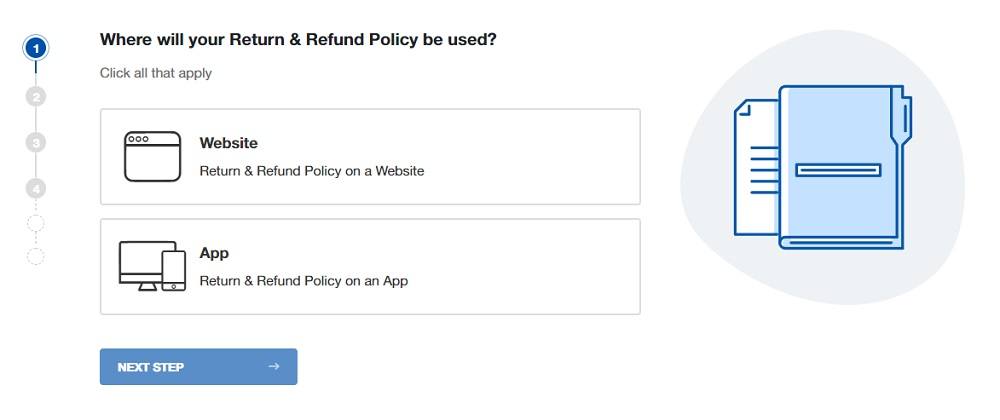
-
At Step 2, add information about your website/app and business.
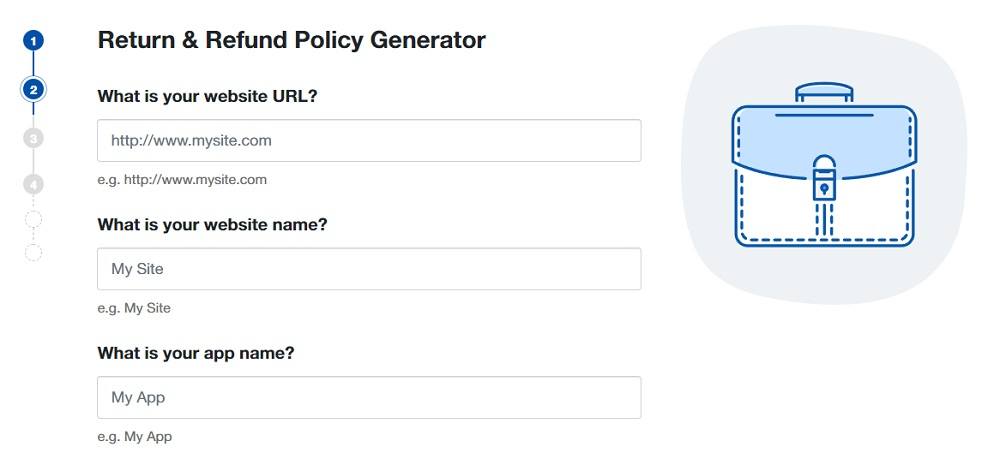
-
Answer some questions about your business practices.
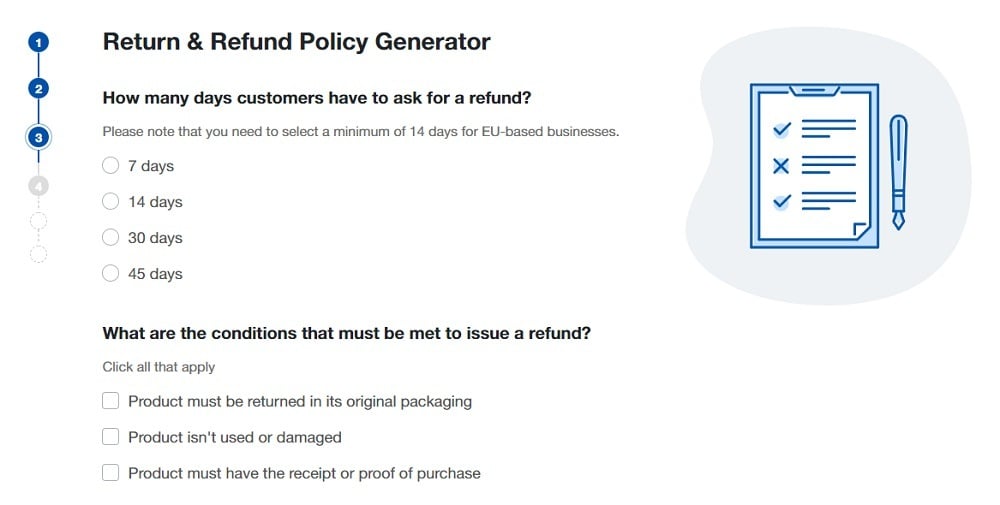
-
Enter an email address where you'd like to receive your Return and Refund Policy and click "Generate."
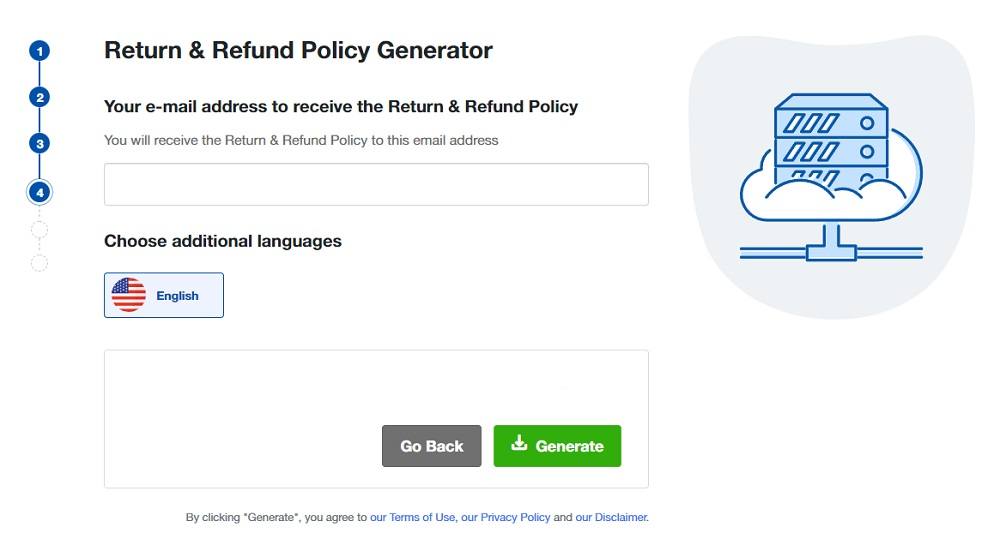
Done! You'll be able to instantly access and download your new Return and Refund Policy.
- 1. What is a Return and Refund Policy?
- 2. Why You Need a Return and Refund Policy
- 2.1. Legally Required in Certain Circumstances
- 2.2. Strengthens Customer Relationships
- 2.3. Can Increase Sales
- 3. Why You Need a Return and Refund Policy for Wix
- 4. What Does a Return and Refund Policy Contain?
- 4.1. How to Start a Return or Request a Refund
- 4.2. Return Window
- 4.3. Return Conditions
- 4.4. Return Fees
- 4.5. Refund Timeline
- 4.6. Refund and Return Exceptions
- 4.7. Refunds for Digital Products
- 5. How to Display a Return and Refund Policy
- 5.1. Website Footer
- 5.2. Checkout Page
- 5.3. Within Terms and Conditions Agreement
- 6. How to Add a Return and Refund Policy to your Wix Website
- 7. Link to Return and Refund Policy from Wix Website Footer
- 8. Summary
What is a Return and Refund Policy?
A Return and Refund Policy is a legal document that explains how customers can return a purchase or request a refund. It describes the steps consumers need to take in order to return an item either online or in-store, and lists any items that are not eligible for returns and/or refunds.
Check out our free, downloadable Return and Refund Policy Template for an example of this Policy, and to help you create your own.
Why You Need a Return and Refund Policy

There are several reasons why you should have a Return and Refund Policy, including to comply with applicable laws, to build trust with consumers, and to increase your revenue.
Legally Required in Certain Circumstances
There aren't any U.S. federal laws that call for businesses to have a Return and Refund Policy. However, there are some state laws that require you to have a Return and Refund Policy if you meet certain conditions.
For example, Section 1723 of the California Civil Code requires you to post a Return and Refund Policy within your physical store or on your order forms if your business doesn't offer full refunds, credits, or exchanges:
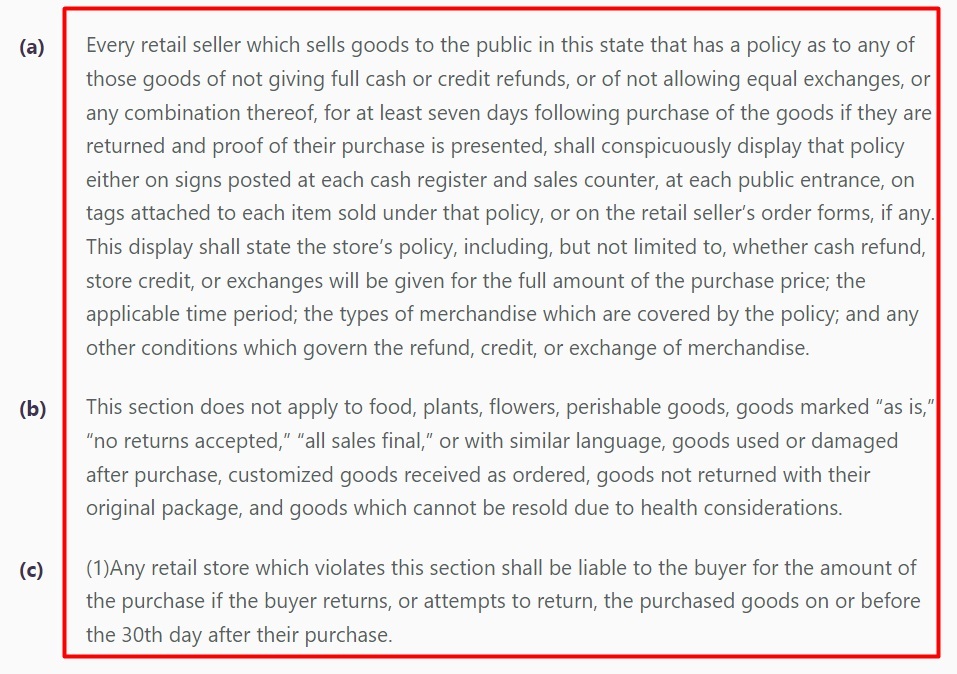
There are also international laws concerning Return and Refund Policies that you will need to follow when doing business with residents of applicable countries.
Any businesses that sell goods to residents of Europe or the UK are legally required to provide refunds for faulty or defective items or items that don't match their description. Businesses that sell to European residents are required to accept returns for 14 days after the purchase date.
The European Union (EU) requires applicable businesses that sell goods to its residents to give consumers a two year guarantee for their products. That means that if a product is defective, the business must repair, exchange, or reimburse the consumer for the price of the product.
Section 40 of Europe's Consumer Rights Directive requires businesses to give consumers a 14 day withdrawal period, during which time consumers can return and request a full refund for their purchase:

Strengthens Customer Relationships
An effective Return and Refund Policy communicates and builds trust with customers. It gives customers the option to exchange items that don't fit or that don't match their description, and informs customers how they can request a refund, if appropriate.
Reebok's Returns FAQ explains how long after making a purchase customers can return an item, how customers can return a purchase, and how long it takes for returns to be processed:
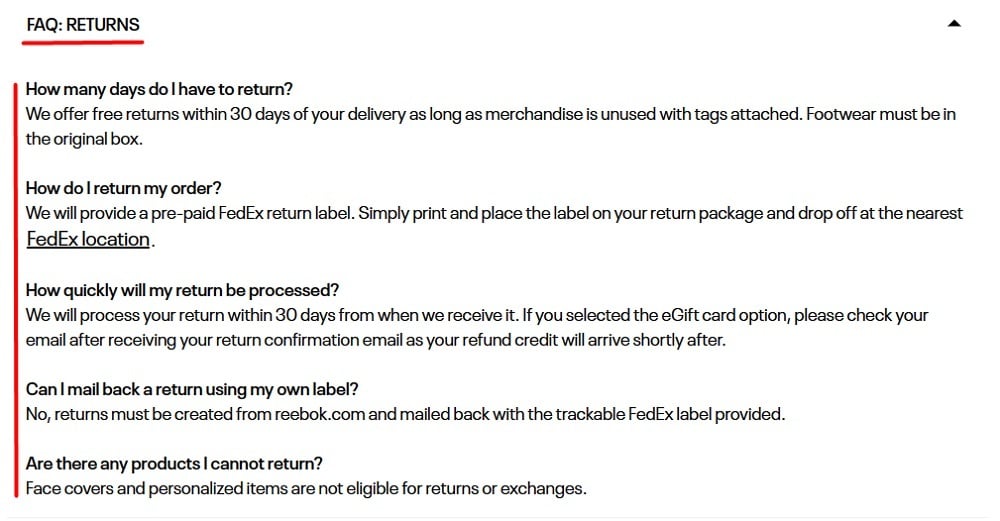
Can Increase Sales
Having a Return and Refund Policy can help you to manage your customers' expectations by explaining exactly what items are eligible for returns and/or refunds before they make a purchase.
According to a product return rate statistics report by Invespcro, 67% of shoppers check the Return and Refund Policy of a business before making a purchase. And customers are more likely to purchase from a company that has a Return and Refund Policy.
Why You Need a Return and Refund Policy for Wix

Having a Return and Refund Policy for your Wix ecommerce site not only helps you to provide good customer service by enabling customers to return any products they are not satisfied with, but it also helps you to comply with Wix's Terms of Use agreement.
Wix's Terms of Use agreement states that its vendors agree to follow any applicable laws, including any state or international laws that may require you to have a Return and Refund Policy.

Wix's Terms of Use agreement also informs vendors that they are solely responsible for delivering their products to consumers and making sure any statements made about their products are accurate:
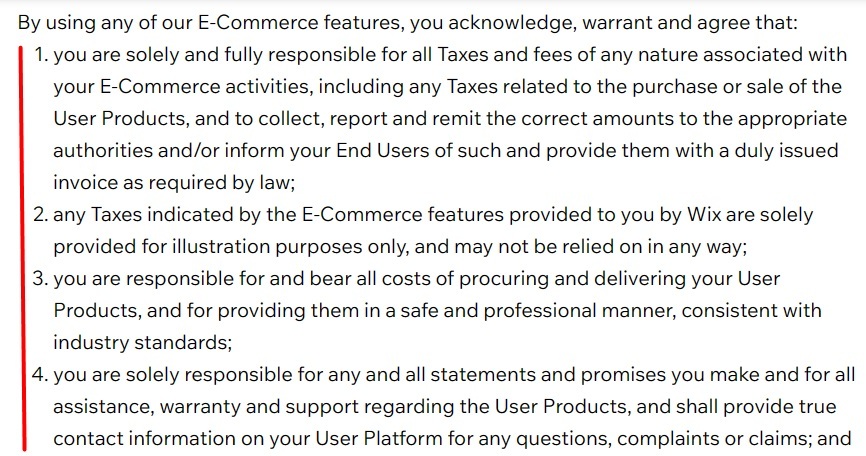
Next we'll look at what your Return and Refund Policy should contain, and how to create individual clauses to address important information.
What Does a Return and Refund Policy Contain?

An effective Return and Refund Policy should contain clauses that explain how to start a return, your return window, conditions, and fees, information about how to request and when to expect a refund, exceptions to your Return and Refund Policy, and rules regarding digital products.
Here are a number of these clauses, with examples and further details.
How to Start a Return or Request a Refund
Your Return and Refund Policy should contain a clause that describes the exact steps customers need to take in order to initiate a return or request a refund.
The North Face's Return and Warranty Policy describes what customers need to do to start a return online:

Apple's support page describes each step of its refund request process, including signing in, choosing the reason for the refund request, and submitting the type of product to be refunded:
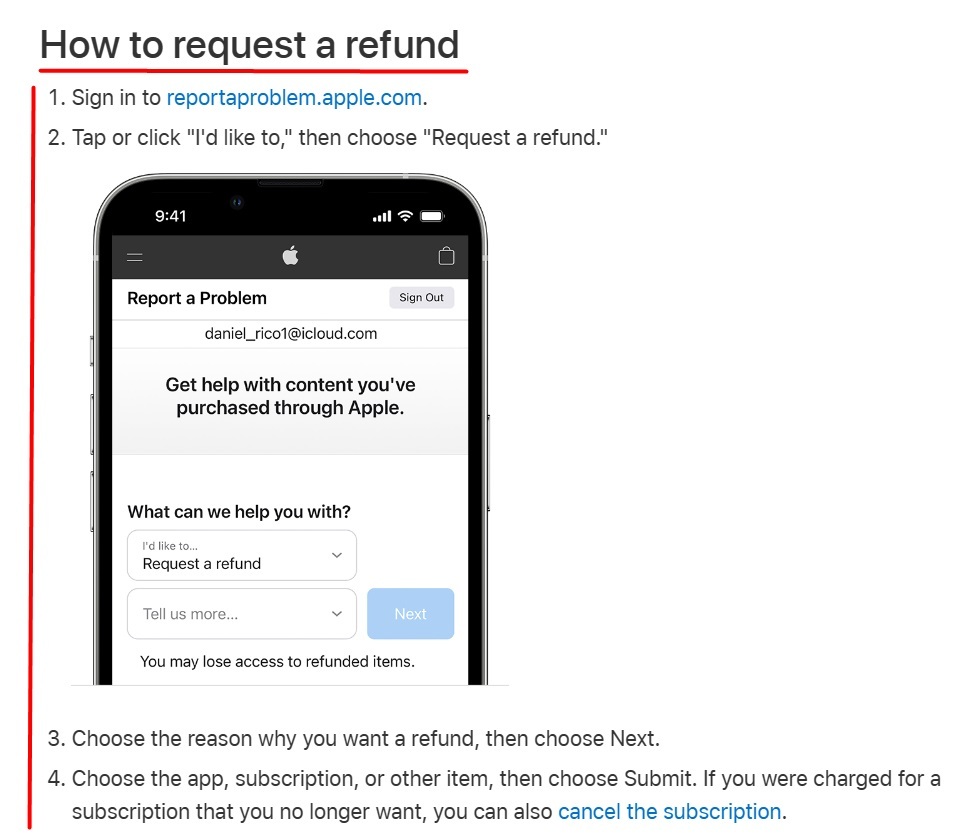
Return Window
Your Return and Refund Policy should let consumers know how long they have to return an item after the purchase date.
Williams Sonoma's Return Policy explains that returns may only be made within 30 days of the purchase date:

Return Conditions
Including a return conditions clause in your Return and Refund Policy serves to explain the circumstances in which you accept returns.
You can use this clause to inform customers about whether items need to be new, in the box, with tags on, unused, or any other conditions that need to be in place for items to be eligible for returns.
Carter's lets customers know that it accepts returns and provides refunds (minus shipping and handling fees) for any new products that have not yet been worn:

Return Fees
This clause lets customers know who pays for return shipping and handling costs, and whether there are any associated restocking fees.
Whirlpool's Return Policy explains that delivery, shipping, and service fees won't be refunded for returns made within 30 days of delivery date, and that products returned within 45 days of delivery for reasons other than damage will be charged a restocking fee:
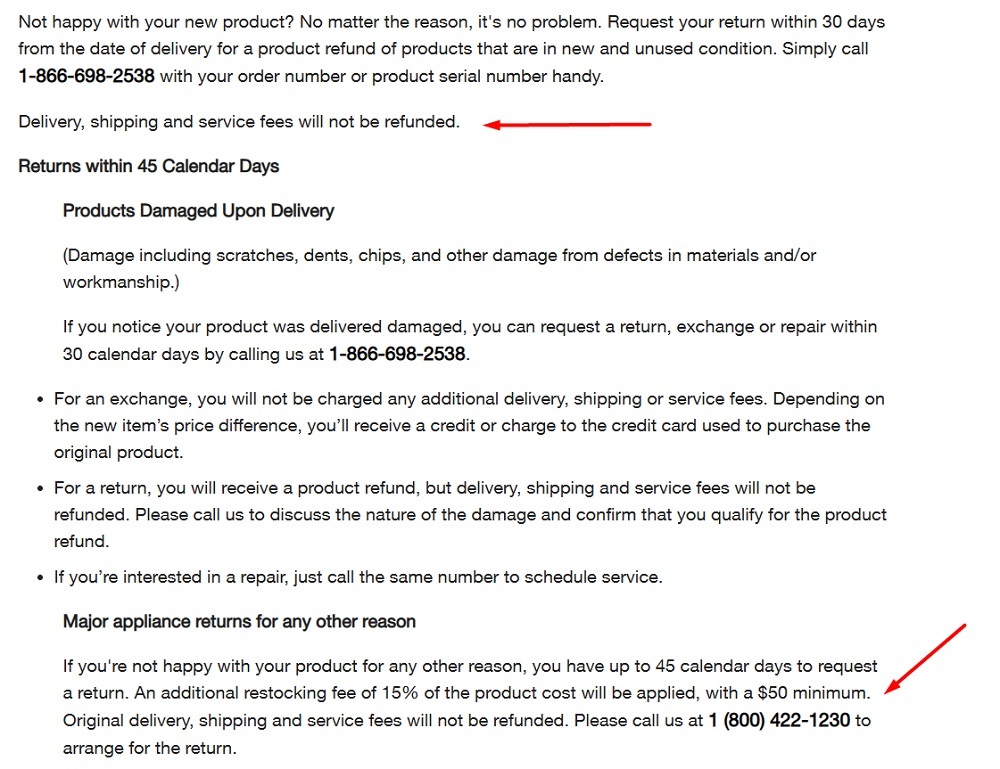
Refund Timeline
Including a refund timeline clause gives customers an idea of when they can expect to receive their refund.
Carhartt's Shipping and Return Policy includes a When Will I Get My Refund? clause that lets customers know that they should receive a refund to their method of payment 5-7 days business days after their return is received:

Refund and Return Exceptions
This clause lets customers know what types of products or services are excluded from your Return and Refund Policy.
Dell's Return Policy lists the types of software and products that are ineligible for return, and lets customers know that it can deny return requests for customers who try to return too many items or violate its Terms of Sale agreement:
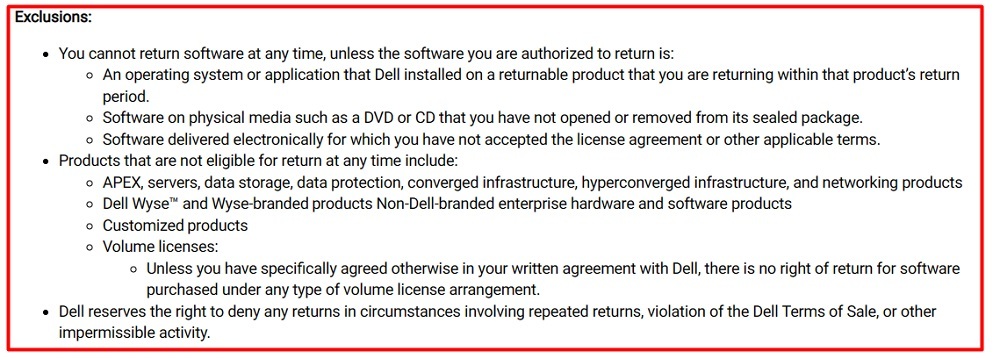
Refunds for Digital Products
Many businesses don't offer refunds for digital products, but for those that do, it's important to clarify the exact circumstances in which you will accept returns or refund requests.
Xbox lets consumers know that it does offer refunds for digital games as long as the refund request is made within 14 days of the purchase date and the consumer hasn't played the game "a significant amount."
The page goes on to inform consumers that they may receive a refund for a digital game for up to 30 days after the purchase date if they don't agree to the license agreement or warranty and they don't make or keep any copies of the game:
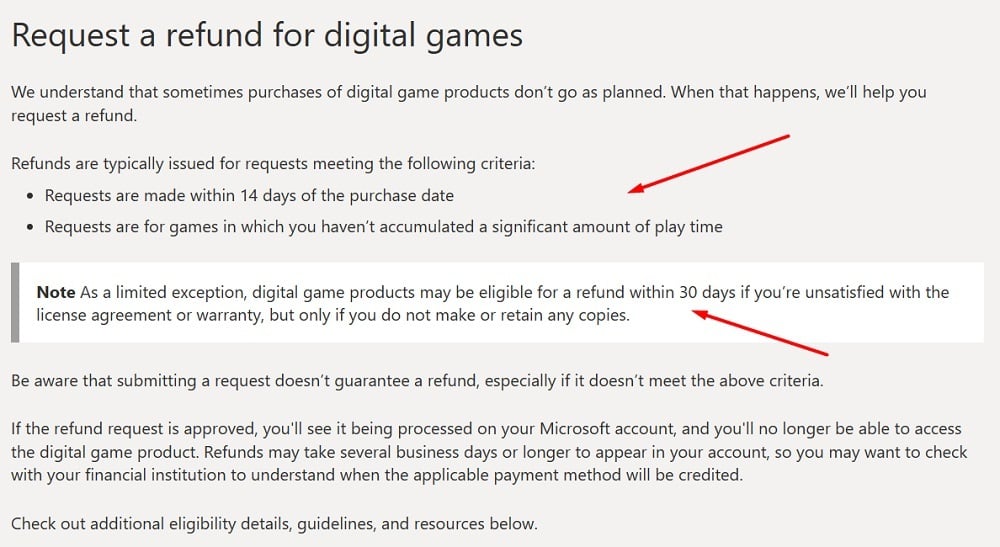
Once your Return and Refund Policy is drafted, edited and finalized, it's time to get it to your customers.
How to Display a Return and Refund Policy

Once you have your Return and Refund Policy written, you should make sure to put it somewhere customers can easily find it. Many businesses put links to their Return and Refund Policy on their website footer or checkout page, or within a Terms and Conditions agreement.
Website Footer
Putting a link to your Return and Refund Policy within your website footer makes it easy for customers to find from anywhere on your website. Many businesses put links to their legal policies in their website footer, so customers know to look there for return and refund information.
Apple puts a link to its Sales and Refunds information within its website footer, alongside links to its Privacy Policy, Terms of Use agreement, Legal information, and Site Map:

Checkout Page
Putting a link to your Return and Refund Policy on your website's checkout page ensures that customers get a chance to read your policies before officially finalizing a purchase.
Barnes and Noble includes a link to its Return and Refund Policies on its checkout page, along with a link to its Safe Shopping Guarantee and customer service and contact info links:
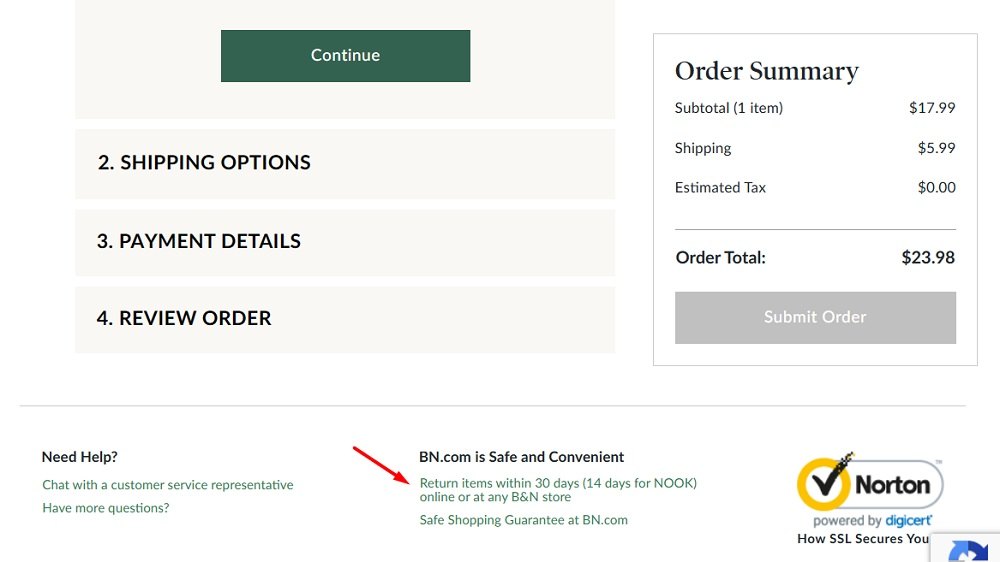
Within Terms and Conditions Agreement
You can maintain a standalone page on your website for your Return and Refund Policy, or you can include it within other legal documents.
A Terms and Conditions agreement is a document that outlines the rules and responsibilities that customers need to agree to in order to use your products or services, and is a common place to put your Return and Refund Policy.
The McDonald's Terms and Conditions agreement includes a Canceling Your Orders, Refunds, and Your Consumer Rights clause that lets consumers know that they must communicate with individual restaurants in order to request a refund:

Follow these quick and easy steps to add your policy to your Wix website and link it to your website's footer.
If you don't yet have a Return and Refund Policy, our Return and Refund Policy Generator will help you create your own custom policy in just minutes.
How to Add a Return and Refund Policy to your Wix Website
After you have your Return and Refund Policy finalized, add a new page to your Wix website where the text of your policy will go.
Here's how you add a new page to your Wix site and add your Return and Refund Policy to it.
-
Log in to Wix.
-
In the Wix Dashboard, click on Edit Site:
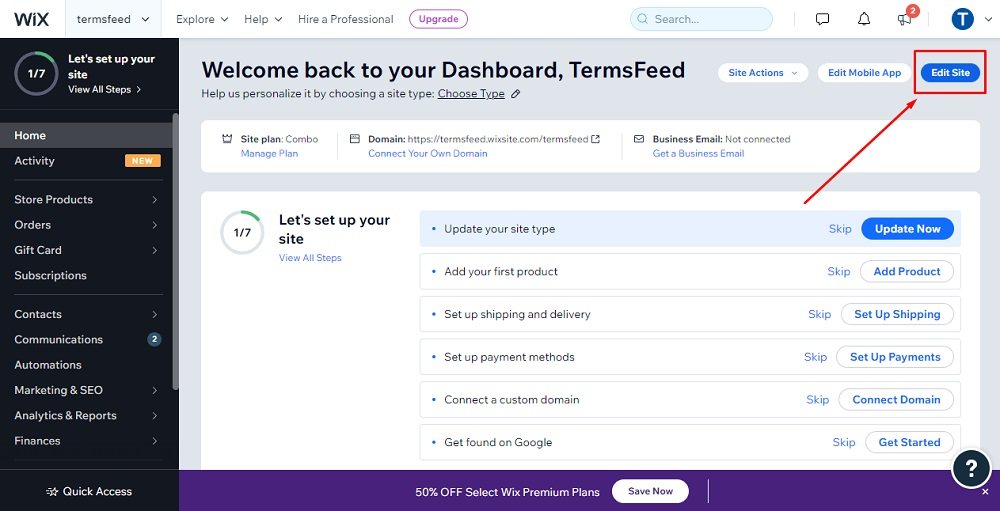
-
When the home page opens, click on Menus & Pages on the left side of the Editor:
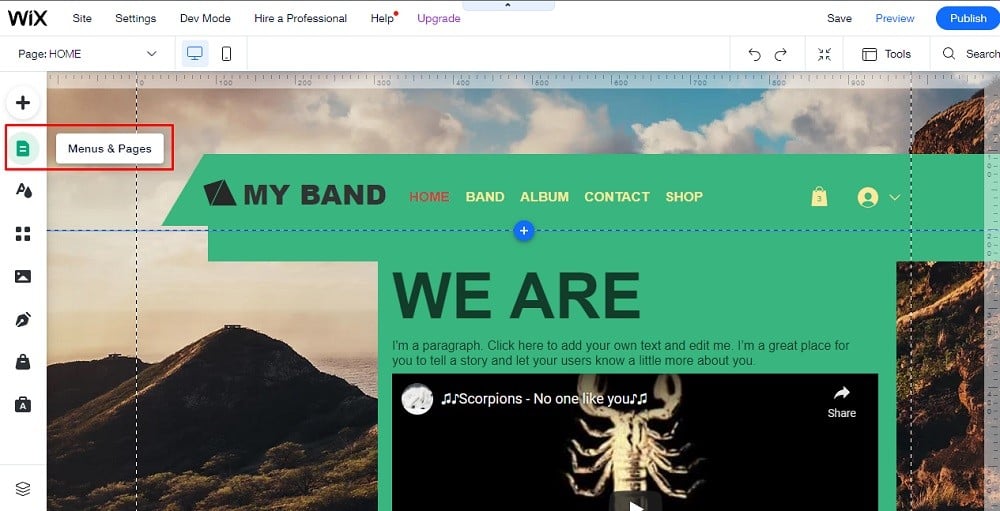
-
In the Site Pages Menu, click on + Add Page at the bottom of the panel:
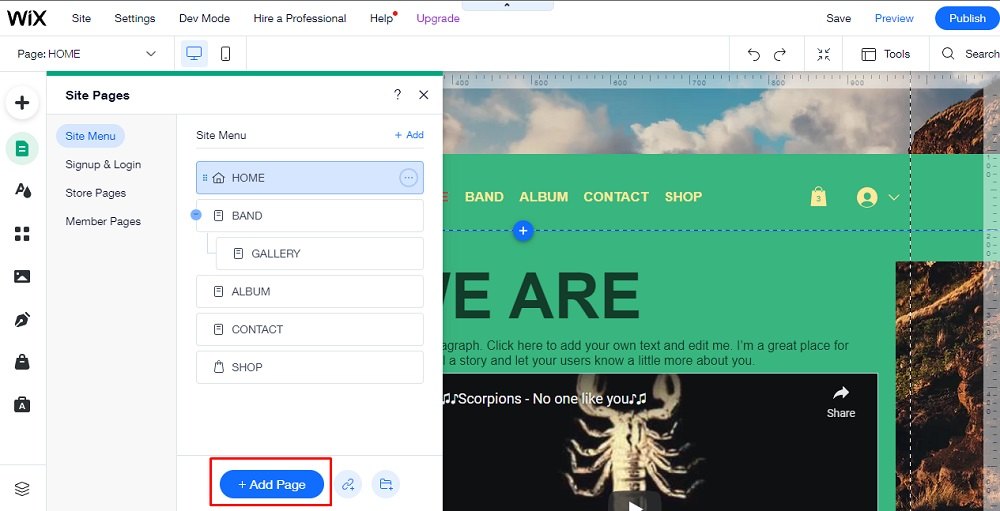
-
Enter the name for the new page as "Return and Refund Policy" and click Done:
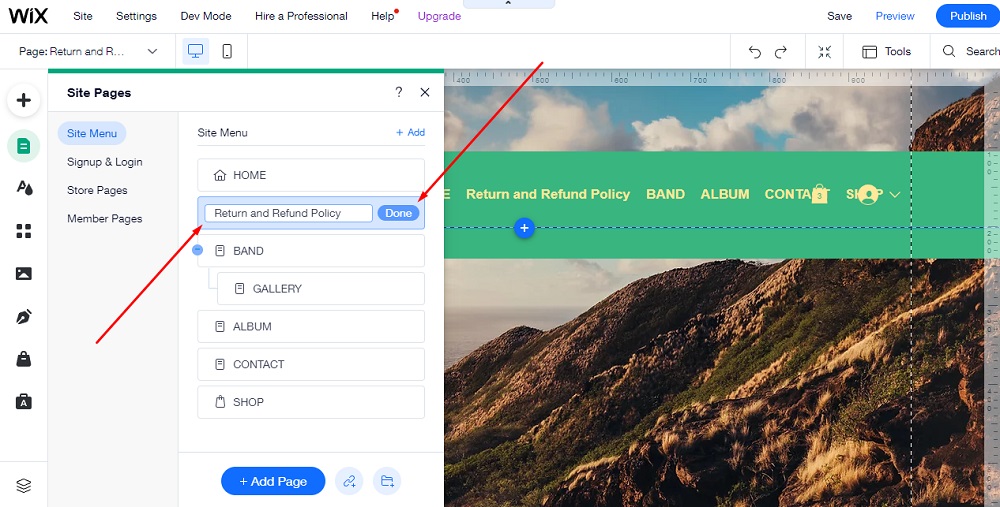
-
While on the new created Return and Refund Policy page, click on the 3 dots to open the page menu and go to Settings:
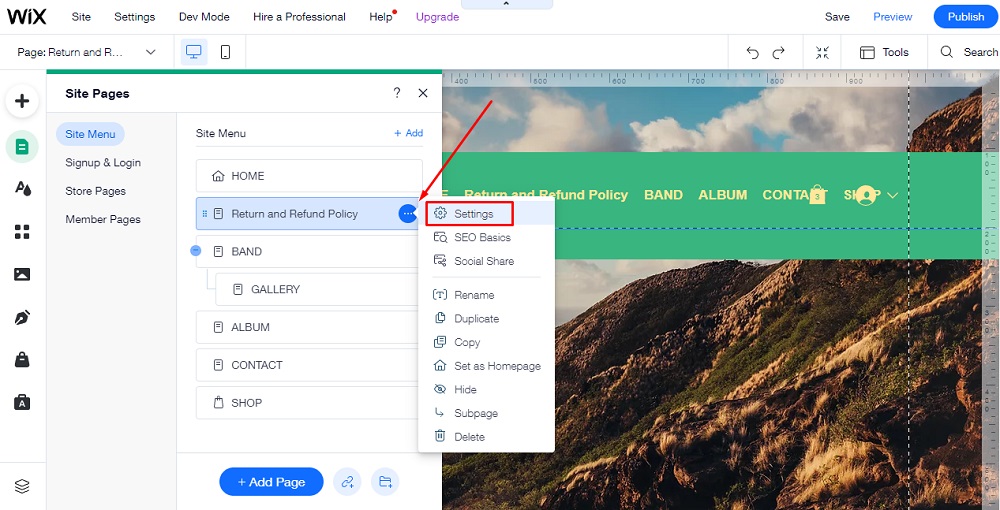
-
Under the Page Info section, toggle the hide from menu button to be active. Close the editor windows:
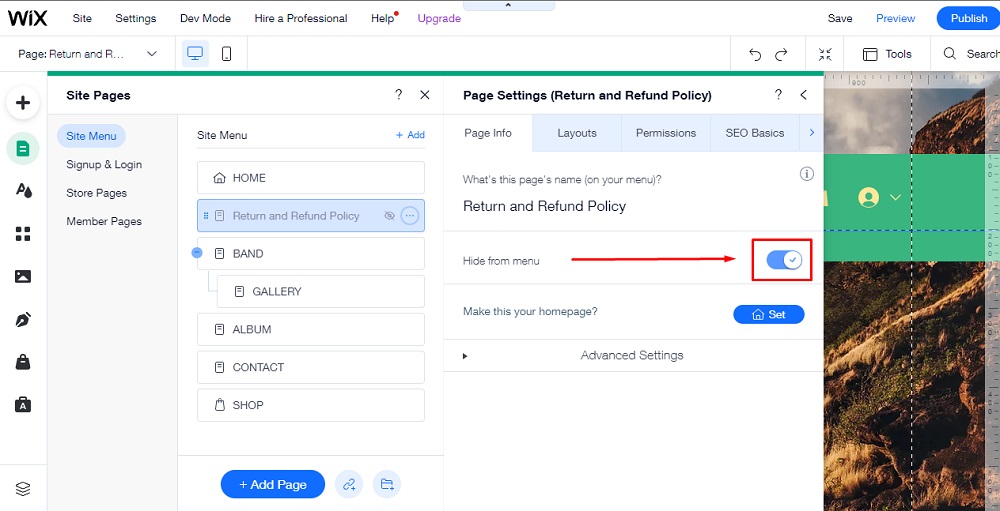
-
While you're on the newly created page, click on + Add on the left side of the editor:
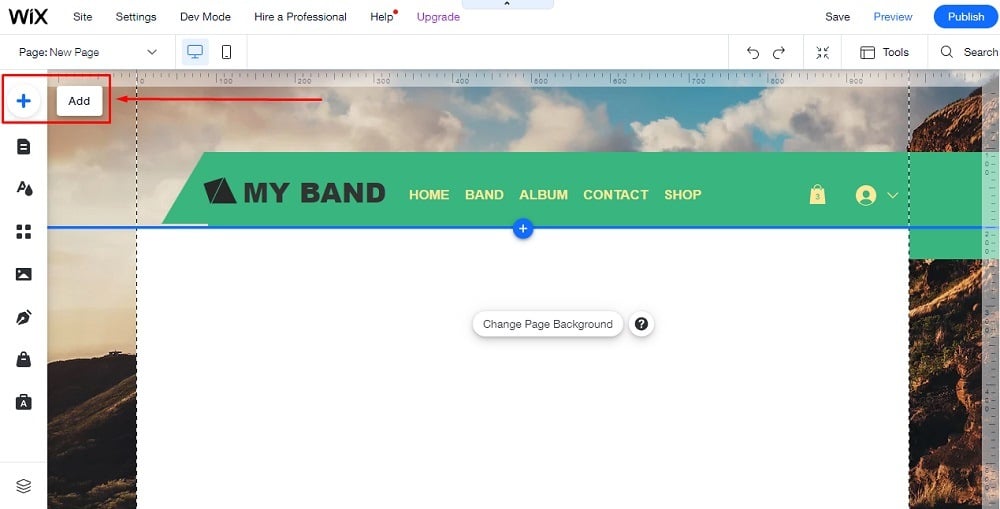
-
When the Add to Site editor opens, scroll down and choose Embed Code, then click on Embed HTML on the right side:
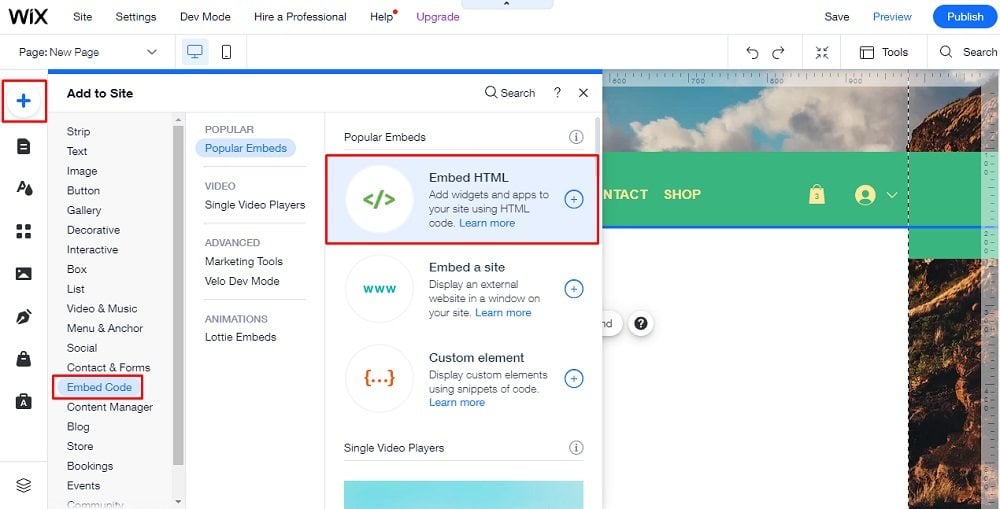
-
Now you need to add text to your Return and Refund Policy page.
If you do not have a Return and Refund Policy, you can use our Return and Refund Policy Generator and create it within minutes.
-
Once you have the Return and Refund Policy created by TermsFeed, let's get the policy text. On the download page, under the Copy your Return and Refund Policy section, click on Copy this to clipboard:
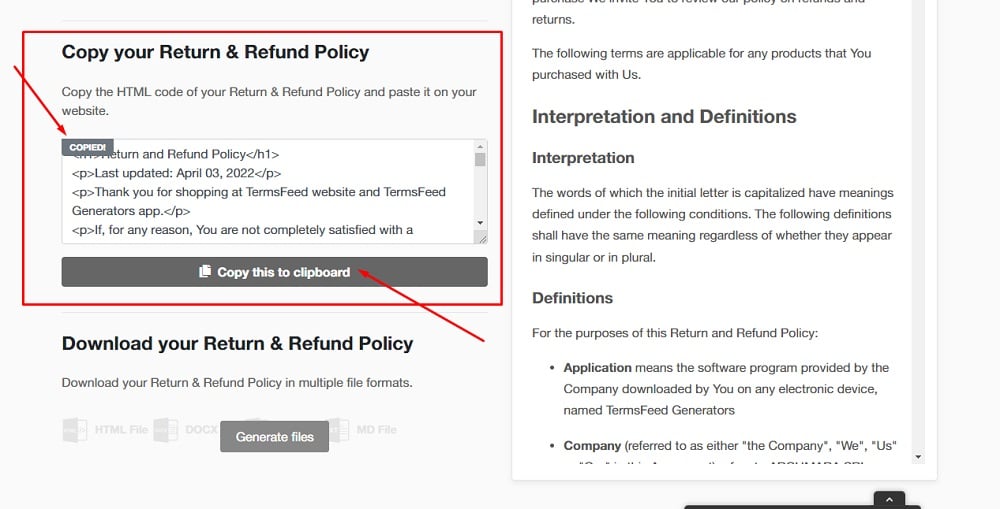
-
Go back to the Wix Editor and double-click on the HTML box so that the HTML Settings window opens. Then just paste the code and click the Update button:
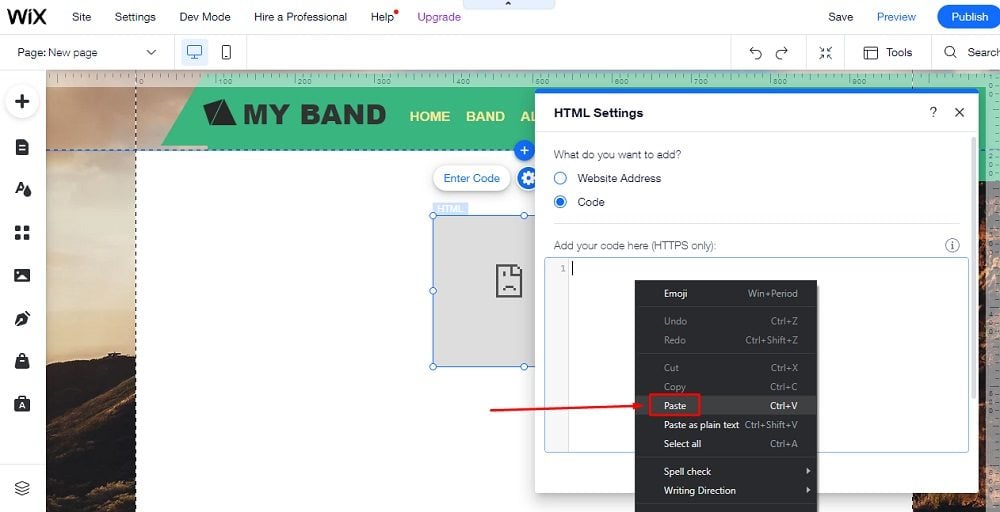
-
You're done!
Now that you've added a new page for your Return and Refund Policy, you can ensure your users can access it at any time by adding a link to it to your Wix site's footer. The footer is the most common place where ecommerce stores place important links, and customers know to look here for such things.
Link to Return and Refund Policy from Wix Website Footer
Here's how to add a link to your Wix site's footer that will link directly to your Return and Refund Policy.
-
Log in to Wix.
-
In the Wix Dashboard, click on Edit Site:

-
Scroll down to the footer of the home page and then go to + in order to Add more elements to your footer:
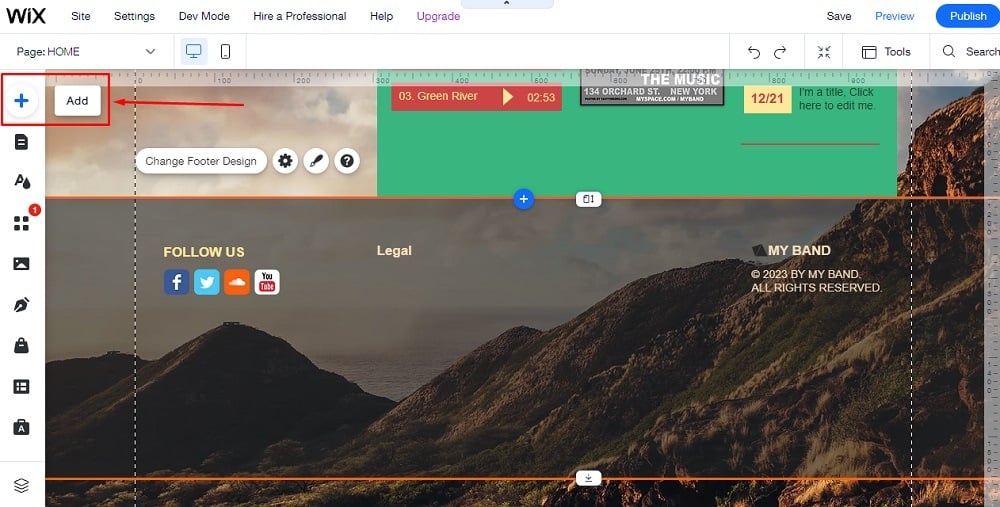
-
When the Add to Site editor opens, click Text, then Themed Text and choose, for example, Paragraph:
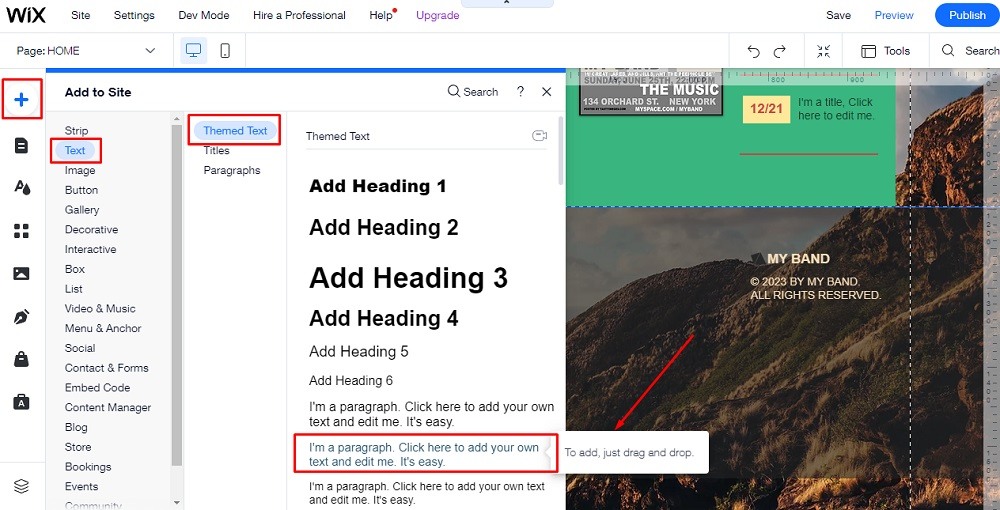
-
Drag the text element to the bottom of the page (as close to the footer as it goes) and click Move To Footer:
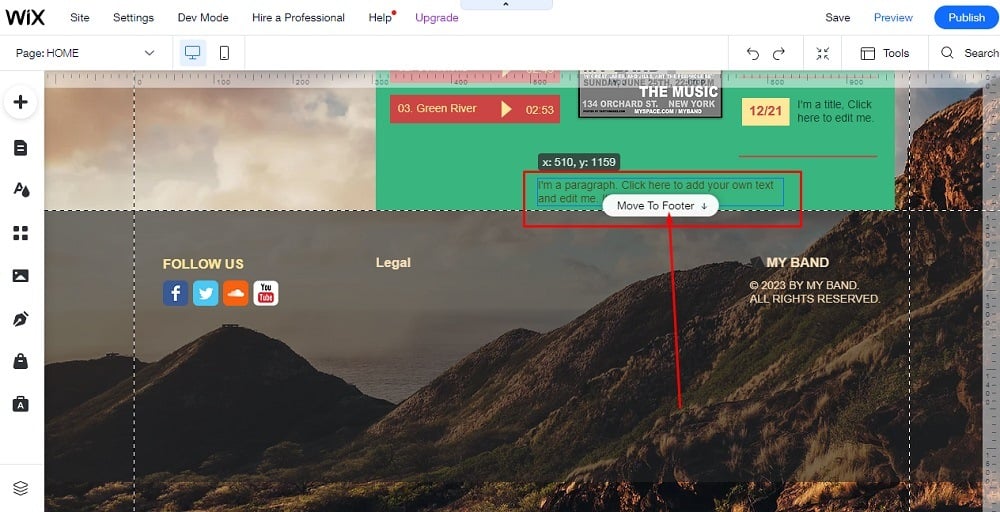
-
After you place the text box in the footer, double-click the Text box in order to edit the text. Type in "Return and Refund Policy," select it and click on the link icon of the text editor:
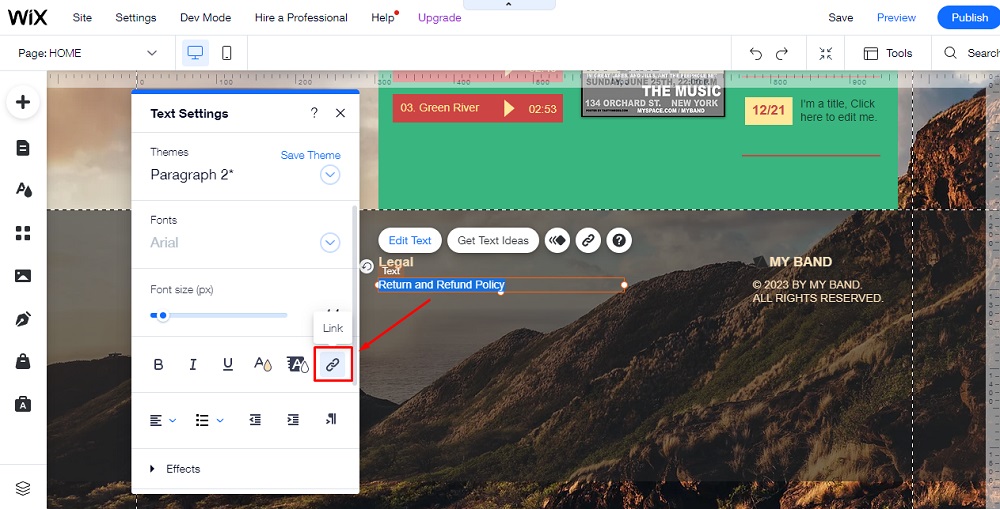
-
When the link opens, choose Web Address:
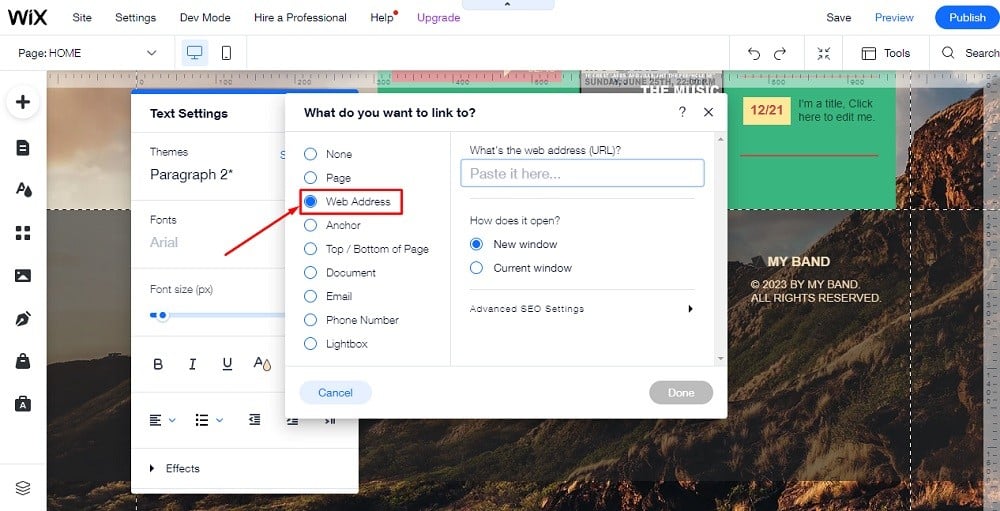
In order to get the Return and Refund Policy URL link, go to the TermsFeed Return and Refund Policy Generator to create the policy and get the hosted policy URL.
-
Once you have the Return and Refund Policy created by TermsFeed,let's get the policy text. In the Link to your Return and Refund Policy section, click on the green Copy button:
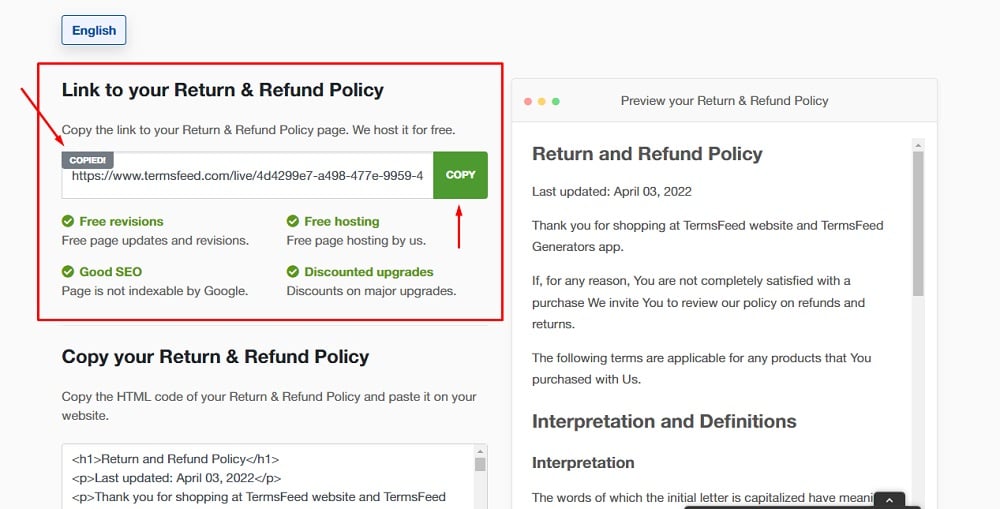
-
Go back to the Wix editor and paste the link into the Web Address field:
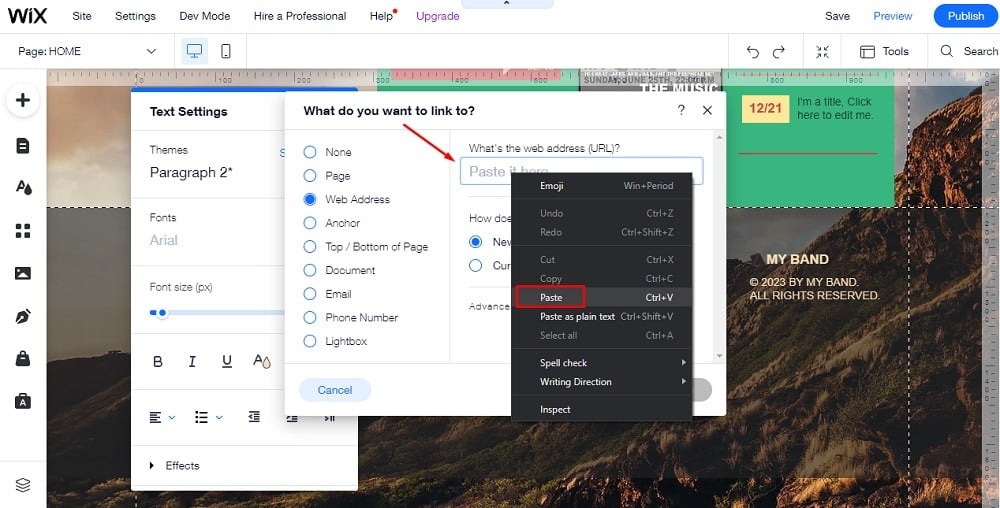
-
Click Done.
Summary
A Return and Refund Policy is a document that explains to consumers how they can request a return or refund, conditions for receiving a return or refund, any return fees, and any items that are ineligible for returns or refunds.
Certain states and countries require companies that do business with its residents to have a Return and Refund Policy.
Having a Return and Refund Policy can help to improve customer loyalty, build trust with your audience, and increase your revenue.
If you have a Wix ecommerce website, you should have a Return and Refund Policy in order to provide good customer service and to comply with its Terms of Use agreement.
A Return and Refund Policy can include the following clauses:
- How to start a return and/or request a refund
- Return window
- Return conditions
- Return fees
- Refund timeline
- Refund and return exceptions
- Digital product rules
Your Return and Refund Policy should be displayed somewhere customers can easily access it. Many businesses put a link to their Return and Refund Policy on their website footer, on their ecommerce checkout page, or within their Terms and Conditions agreement.

Comprehensive compliance starts with a Privacy Policy.
Comply with the law with our agreements, policies, and consent banners. Everything is included.





